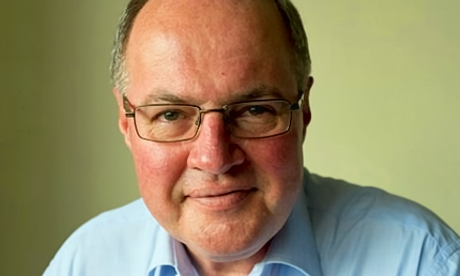Throughout the Catholic Church, something is stirring about the way we are governed.
For many of us in the Church and across society, we don’t much care about that subject; we long ago made peace with being parts of communities, organizations, nations and even families where we just get on with our lives and leave running the show to those who like to be in charge of things.
But now in the Church, each of us is being presented with the challenge and opportunity to take a larger part in setting the course and managing the conduct of the very thing we are already part of — the Church.
Even in those parts of the Catholic Church where Eastern Church precedents make for different patterns of liturgy and Church structure — the Syrian tradition in India, for example — the pattern of governance is under pressure.
Our response is based on a vast slew of experience of participation in communities and their governance.
Some of it is relevant and some of it is completely irrelevant to today’s challenges and opportunities to set the course and manage the conduct of our life in the Church.
For example, today we can assume greater managerial responsibilities commensurate with our qualifications and experience in particular areas of missionary or apostolic activity, whether or not we also hold or have ecclesiastical status as, for example, a cleric may enjoy.
And then there are those tasks and responsibilities that require the munus or office authorized by the clerical state.
That is exactly where the trouble starts for the exercise of governance in the Catholic Church.
Despite all manner of exhortations to share in and participate in the governance of the Church, it is simply and practically impossible without the munus that comes with orders.
Some of us live in democratic, participatory societies. Many more among us live in societies that are authoritarian and centrally controlled political entities. Very often throughout history, that experience has mistakenly been adopted as normative for church governance.
No listening; no inclusion of those on whom the changes had an impact in the decision-making process; top down, command and control management was common in medieval societies and was adopted in the Church, with ecclesiastical rationalizations providing for an operating structure that actually had no theological mandate.
An alternative collegial structure was common enough in the Middle Ages too and led to the creation of the kinds of collaborative governance better known as capitular, collegial or even conciliarist structures that still persist in religious orders and congregations that elect their leadership on a regular basis and also legislate for the conduct of their lives together in the chapter.
These are all forms of collegial, collaborative, participatory leadership.
Now, under the present pope’s leadership but drawing on the encouragement and structure suggested by Vatican II, we are building a life of leadership by a synodal form of governance.
But what exactly does that mean?
It has been suggested that synods can be constructed and operated as the Church’s response to democracy. But that’s not really the case.
The two main forms of democracy at work or available in the world are representative democracy and participatory democracy.
Representative democracy is more common and has elected representatives voted into assemblies to legislate what those they represent consider most desirable; then, when their job is done, they can be replaced by other representatives.
Participatory democracy can only work with smaller populations where all those with a stake in the legislative outcome get to cast a vote on what that outcome is to be.
Synods are very different because only people of a certain status in the Church get to participate and not all those participating get to have an effective say in what is decided.
Sometimes, the best that many in a synod without a deliberative or decisive voice or vote can hope for is consultative status.
So, synods are not democratic. The Australian Plenary Council was like that.
The Australian Plenary Council was something like the British House of Lords whose members are not elected by anyone but constituted by birth rights or because of a status granted by the Crown — a peerage.
Synod “fathers” are all males and are in their places by virtue of their ordained status in the Church.
Most, it seems (as in Australia), are nominated by bishops and appointed, not elected.
The reach and significance of this status are plainly restricted and circumscribed and one would be hard-pressed to find the ordinary operations of a synod in the Catholic Church to be anything more than a very small step along the way to fixing the challenges to governance.
Anglican Church governance is more developed in its use of synods and we have lots to learn from them.
They aren’t the last word because they reflect the church and society in which they were formed. But they would be a good place for Roman Catholics to start to learn how other voices than bishops might be heard, which is what the formalities of the Catholic process mean – bishops appoint the members of the synod and will ultimately vote on any recommendations.
The Anglicans have three houses — bishops, clergy and laypeople — established for their decision making; they have borrowed from the Orthodox and Lutheran churches.
It will now fall to Roman Catholics to learn from these other churches how to go about structuring and harmonizing these various voices for more effective governance.
Clearly, Catholics have a long way to go if they aim to catch up with Orthodox, Anglican and other Protestant structures and processes that have been developing as Catholics have put ever more trust in doing it all from Rome over the centuries.
But Catholics can’t stay where they are.
They will just get bogged down in their own frequent failures to meet the challenges of the times.
- Michael Kelly SJ is a media professional with 40 years of experience in writing and reporting, editing and publishing, TV and broadcast radio production in Asia and Australia. For 10 years he led Asia’s leading Church media organization – UCA News. Currently, he is the English language publisher of the respected Jesuit periodical La Civilta Cattolica.
- First published in UCANews.com
News category: Analysis and Comment.




